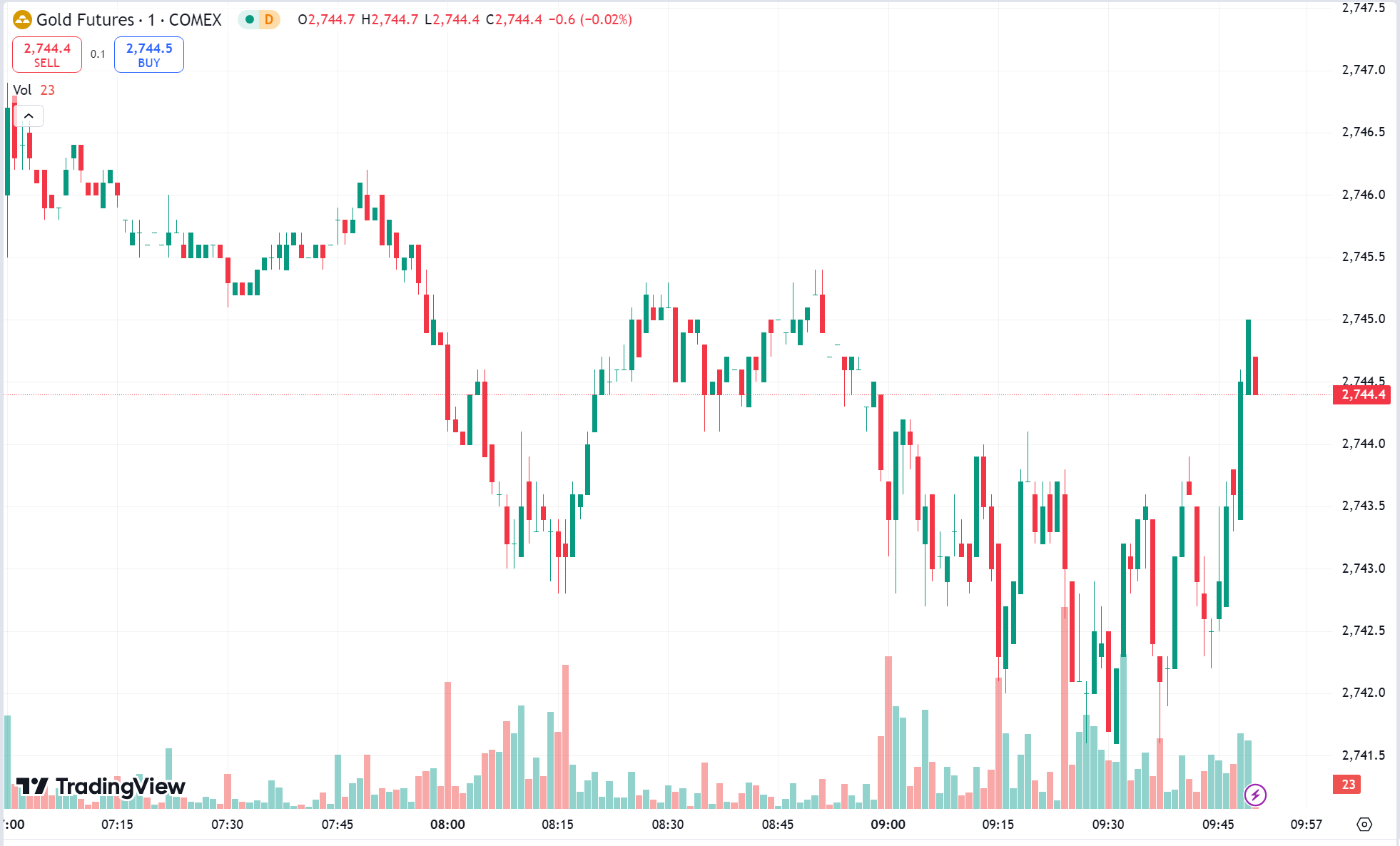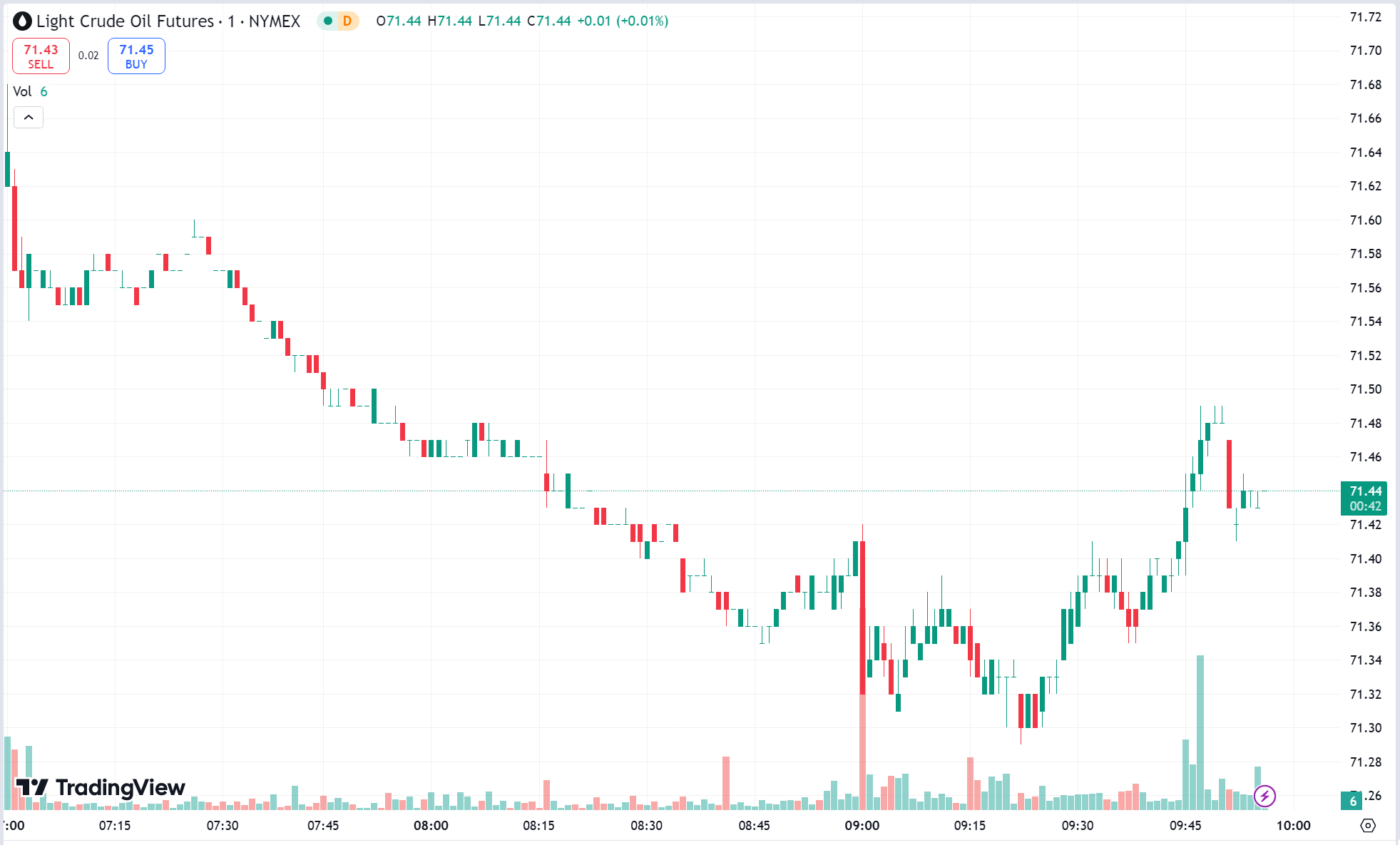
Gold
With election day approaching and polls showing a tight race, uncertainty grew, leading to a cautious stance in the market. Gold held steady within a narrow range, closing up 0.05% at $2,736.48 per ounce. Investors are closely watching Tuesday’s U.S. September trade balance and October ISM Non-Manufacturing PMI data.
As the final day of the U.S. election arrived, polling showed a close race between Trump and Harris, with swing states becoming crucial. Over 80 million voters had cast early ballots, and both candidates made last efforts to mobilize supporters for election day.
Before election results, profit-taking in betting markets cooled the “Trump trade.” Safe-haven demand and reduced bets on a Trump victory caused the dollar to dip below 104, and 10-year U.S. Treasury yields fell by 10 basis points, keeping gold above $2,730.
On election eve, Goldman Sachs’ commodities team shifted its gold holdings to options as a risk hedge, noting that “everyone we’ve spoken to is long on gold,” aiming to retain a bullish stance with enough liquidity for buying on dips.
On the geopolitical front, Iran’s Foreign Ministry spokesperson held a press conference on November 4, emphasizing Iran’s readiness to use all possible means in response to Israel.
Gold Technical Analysis:
Gold continued to consolidate, opening at $2,736.8 and trading within a range, hitting a low of $2,730 and a high of $2,748.4 before closing at $2,736.4 with a shooting star pattern, signaling potential further adjustments.

Today’s Focus:
- Resistance: $2,745-$2,750
- Support: $2,730-$2,720
Oil
On Monday, oil prices gained as OPEC+ announced a delay in its planned production increase. WTI December crude rose $1.98 (2.85%) to $71.47 per barrel, while Brent January crude closed up $1.98 (2.71%) at $75.08 per barrel.
Over the weekend, OPEC+ decided to postpone its December production hike by one month due to weak demand and recent price declines. The alliance, initially planning to increase daily output by 180,000 barrels, will extend its current reduction of 2.2 million barrels per day until December.
UBS analyst Giovanni Staunovo commented that OPEC+ seeks clearer signs of economic recovery and is watching the effects of recent U.S. rate cuts and Chinese stimulus. He added that the U.S. election could shift economic policies, and countries exceeding quotas are expected to reduce output.
In response to pessimism around oil demand, OPEC Secretary General Haitham Al Ghais reassured attendees at an Abu Dhabi energy conference that delaying the output increase is not unusual and expressed optimism about demand.
The market continues to monitor geopolitical developments. Iran’s foreign ministry reiterated Tehran’s commitment to countering Israel’s actions. IG strategist Yeap Jun Rong suggested that oil’s rally may persist, but breaking the $78.50 resistance remains uncertain.
Oil Technical Analysis:
Oil opened at $70.84, dipped to $70.45, and then rose to a high of $72.07 before closing at $71.91 with a long-shadow bullish candle, indicating further upward adjustment. On the 4-hour chart, Bollinger Bands are widening upward with moving averages forming a golden cross, though upward momentum is limited.

Today’ Focus:
- Resistance: $72.0-$72.5
- Support: $70.7-$69.3


